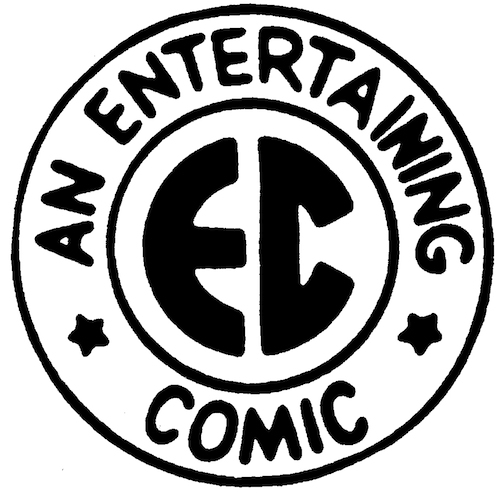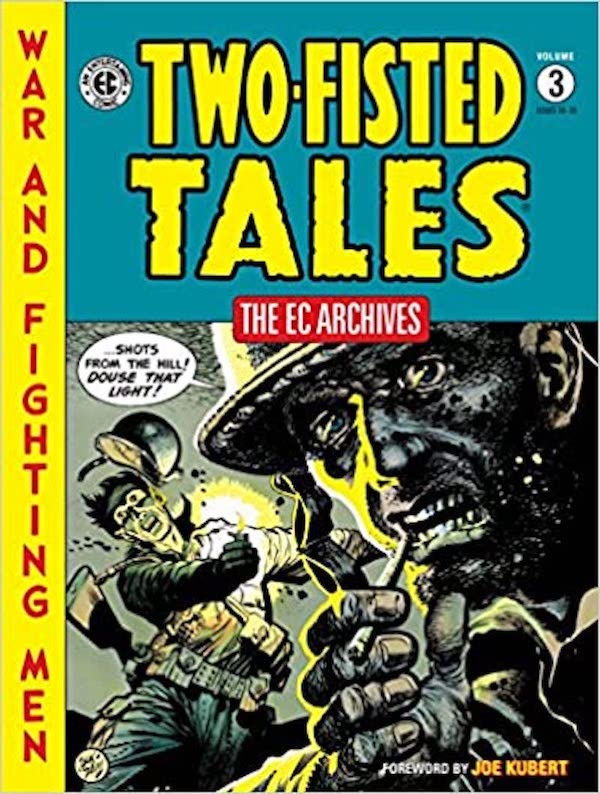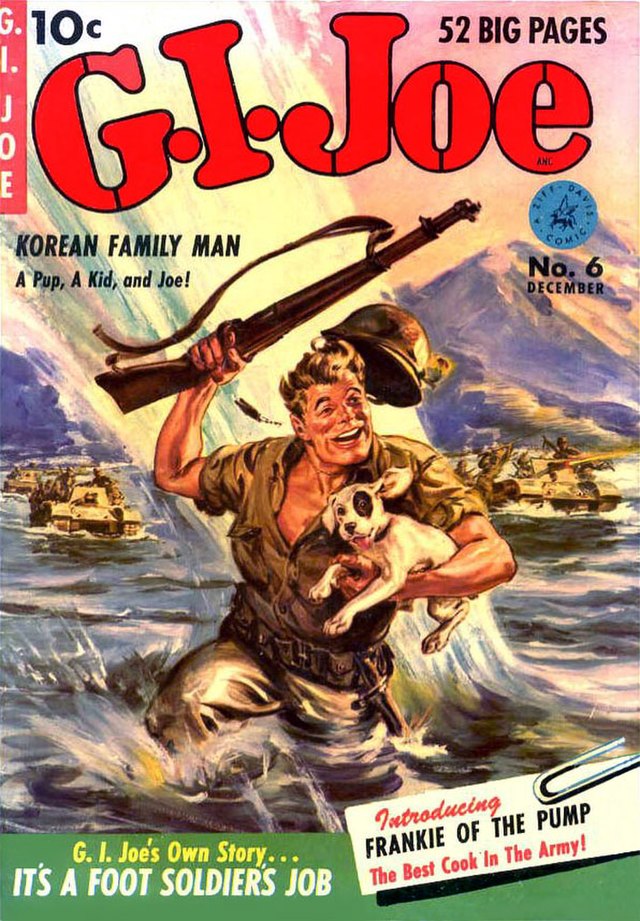This article originally appeared on the Tempest website and can be located here.
In 1952 there existed twenty comic book publishers, publishing six hundred fifty titles a month, and employing one thousand workers. By 1956, the industry had shrunk to six publishers and two hundred fifty titles employing two hundred people. What happened in the interim is a telling story of how a uniquely American art form was artificially stunted and constrained in a way that combined moral panic with McCarthyist witch-hunting. It is also a story of how the organized left, both in the United States and abroad, joined forces with political, religious, and cultural authorities to stamp out a burgeoning critical medium.
Genres as diverse as war, horror, crime, and romance had regularly appeared on shelves and in the hands of readers, the same genre variations as other popular media such as film and television. But the transformation of the industry led to the domination of “long underwear characters,” a bias that continues to today. At the same time as the McCarthyist Red Scare, religious authorities, police, government, and self-styled moral guardians—right and left—with the consent/cooperation of comic book industry associations formed an unholy alliance that eviscerated the industry and helped to put Superman, Batman, and the rest on top.
The Great Comics Scare happened when it did for several reasons. First, there was an uptick in juvenile criminality that coincided with the family instability and social anxiety caused by the war in Korea, which itself led to a search for blames, one of which was the comic book industry. Second, there was the general conformist right-wing turn seen in politics with the ascendency of the Republican Party and the McCarthyist Red Scare that led to a reaction against the sort of violent, lurid content often seen in comic books. Finally, there is the fact that in the United States every new form of artistic expression has produced some kind of backlash, from the film industry, to rock and roll, to video games. The comic scare was simply the most devastating to the medium in question.

The main target of these groups in the 1950s was a comics company known as Entertaining Comics. EC had been founded as Educational Comics by Max Gaines, who is credited as the inventor of the American comic book (having published Famous Funnies: A Carnival of Comics in 1934). The company specialized in funny animal comics and illustrated Bible stories that were financially unsuccessful. At the time of Gaines’s death in a boating accident in 1947, the company was one hundred thousand dollars in debt.
Enter William Gaines, Max’s then 25-year-old son. William had served in World War II and was attending school to get a degree in education. Gaines managed to turn around his father’s company by drastically switching genres from Bible stories and history to science fiction, horror, war, and crime. New titles appeared such as Weird Science Fiction, Crime SuspenStories, Vault of Horror, and most famously, Tales from the Crypt.
Unlike DC and Timely (later Marvel) who had a house style that artists were expected to adhere to, EC prized artistic talent and had a roster of talented artists who were allowed to draw in their own unique styles. Artists who worked for EC included Jack Davis, Wallace Wood, Joe Orlando, Jack Kamen, and Graham Ingels. EC was also unique in allowing artists to sign their work, a practice virtually unheard of at other publishers. EC began to turn a profit, and soon imitators spawned at rival companies.
EC was also unique in their tackling of social issues in their stories. Shock SuspenStories focused on anti-Semitism, police corruption, lynching, McCarthyism, and segregation. One story, “the Guilty,” included a white sheriff shooting an innocent Black man in the back and claiming he was shot while trying to escape. Another, “Under Cover,” featured a KKK-like organization made up of prominent citizens in a small town. “Hatred” involved a group of gentiles attempting to drive a Jewish family out of their “pure” neighbourhood. While racist police, the Klan, and anti-Semites are obvious targets of political art today, EC was publishing at the same time comic book characters like Blackhawk, Captain Marvel, and the Spirit all had crude racial caricatures as sidekicks.

EC’s war comics, Two Fisted Tales and Frontline Combat, also contained elements of social protest. The stories were written largely by Harvey Kurtzman who, as a teen, assisted the Communist Party’s Daily Worker cartoonist. Novelist Pete Hamill described Kurtzman’s tales as “hard, bleak, free of rah-rah patriotism. They were about men, not costumed superheroes.” The Cincinnati Committee on the Evaluation of Comic Books, a regulatory body that rated comics based on perceived wholesomeness, even warned in 1952 that comics like EC’s war stories “could be construed as trying to make Americans want to pull out of the war and to discourage young men from enlisting.”
These stories stood out compared to contemporaneous books like G.I. Joe, which once ran a cover featuring a beaming G.I. with a dog in one hand and a Tommy gun in the other, gleefully mowing down Communist soldiers. Kurtzman described his competition as “feeding this crap to the children that soldiers spend their time merrily killing little buck-toothed yellow men with the butt of a rifle.”
While EC was enjoying its good fortune, an anti-comic book backlash began. Though this was not the first campaign against comics (high society magazines like the Atlantic and the Nation attacked the newspaper comics at the turn of the 20th century), the backlash was the most impactful and disturbing. Various organizations sponsored the burnings of comics, ranging from the Cub Scouts to The American Legion to local Catholic Archdioceses. Burnings were justified for many reasons, depending on the organization, from comics’ “trashy” aesthetics to their perceived contribution to the decline of moral virtue. The first burning occurred in Spencer, West Virginia in 1948 when six hundred children overseen by teachers, priests, and community leaders went door to door gathering comic books and then burned them on a massive pyre. This was only three years after the defeat of Nazi Germany, a regime well known for its practice of burning objectionable books. The practice soon spread like wildfire to Chicago, New Jersey, Missouri, and outside the United States to Vancouver. The book burners did not discriminate by genre, with even the iconic Superman and Batman being added to the bonfire, along with supposedly unsavoury horror and crime comics.

Next came the involvement of the government. In 1948 Los Angeles County passed an ordinance banning the sale of comics to minors under threat of either a five hundred dollar fine or six months in jail. Other municipalities that passed bans included Baltimore, Cleveland, Milwaukee, and St. Louis. A 1949 effort by the legislature of New York to ban all comics was stopped only by the Governor’s veto. New York legislators did pass a successful censorship bill in 1955 that prohibited the publication of “lurid comics” and the sale of comics that contained the words “crime,” “terror,” or “horror” as part of their title.
These bans were not limited to the United States either. In Canada, Progressive Conservative member of parliament Edmund Davie introduced a law allowing legal action to be taken against anyone who “makes, prints, publishes, distributes, sells, or has in his possession for the purpose of publication, distribution, or circulation a crime comic.” This law was passed in 1949 by both houses of parliament.
Over in the United Kingdom, things were just as anti-comic. A special 1951 issue of the Communist Party of Great Britain’s Arena stated that “Comics portray fantasies of the future, all fascist in character.” In the United Kingdom a law was passed in 1955 at the urging of the Archbishop of Canterbury and the Home Secretary that banned comics that depicted “(a) the commission of crimes; or (b) acts of violence or cruelty; or (c) incidents of a repulsive and horrible nature.” While originally set to expire, this act was made permanent in 1969 and remains on the books.
In 1949 France outlawed the sale of comic books glorifying “banditry, lying, stealing, laziness, cowardice, hatred, or any acts of crime” with the support of the French Communist Party who denigrated “degenerate comics” from the United States.
If the political establishment and the International Left were decidedly anti-comics, the political Left in the United States was no better.
If the political establishment and the International Left were decidedly anti-comics, the political Left in the United States was no better. The Communist Party’s Daily Worker blasted “so called ‘comics’ for brutalizing American youth to prepare them for military service in implementing their government’s aims of world domination.” The Socialist Workers Party called comics,
“that typical product of culture sponsored by American capitalism … a narcotic to which undeveloped and adolescent minds are very much addicted. They deal with violent sadistic stories presented in a series of pictures and captions, prepared in such a way as to be understood without thinking.”
Sociologist C. Wright Mills, a founding influence on the American New Left, referred to comics as “these ugly pamphlets” in a defence of the efforts to regulate comics. The progressive magazine the Nation stated in an untitled article from 1949 that “it is appalling that 60,000,000 comic books are sold in this country every month,” comparing this unfavourably to the number of other books sold.
Seemingly the only progressive news organization that had anything positive to say about comics was the Black newspaper the Chicago Defender. In 1953 the paper printed an editorial praising the EC Comics story “Judgement Day”, a science fiction allegory for segregation.
The worst was still yet to come. Psychiatrist Frederic Wertham, who worked extensively with juveniles in New York, wrote a book titled Seduction of the Innocent in 1954 that laid the blame for all sorts of issues on comic books. Wertham cited that Batman and Robin were “a wish dream of two homosexuals living together,” Wonder Woman was a lesbian, and Superman was a fascist icon. Wertham also wrote that he believed children would imitate the violent acts they had seen in horror and crime comics. Excerpts from the book as well as other pieces by Wertham appeared in the popular press, such as the Ladies Home Journal, and led to a Senate hearing on the effects of comic books.
The Senate Subcommittee on Juvenile Delinquency was established in 1953 and chaired by Estes Kefauver, a Tennessee Democrat with designs on the Presidency ever since he had chaired investigations into organized crime. Frederic Wertham was the star witness at public hearings the Subcommittee held between April and June 1954. Wertham opined that “Hitler was a beginner compared to the comic-book industry.” Wertham also excoriated EC for their story “the Whipping” from Shock SuspenStories. The story attacked racist vigilantism against Mexican Catholics but Wertham made it seem like the story promoted racism. Following Wertham came William Gaines, EC’s publisher, who attempted to explain the entertainment and social value of his comics to the stodgy group of Senators. He cited the example of “the Whipping”, and he could have also cited “Judgment Day”, “In Gratitude”, or “Blood Brothers,” all stories with social messages that received positive reader feedback. However, the hearing quickly turned to questions of artistic depictions of violence and “taste” that Gaines was obviously unprepared to rebut. The turning point came when the cover of Crime SuspenStories No. 22, featuring a man holding a severed head in one hand and a bloody hatchet in another, was unveiled. Gaines weakly stated that the cover was in good taste “for a horror comic,” a charge the Senators and television audience found incredulous.[Psychiatrist Frederic Wertham] opined that “Hitler was a beginner compared to the comic-book industry.”
In the aftermath of the Senate hearings, the panicked comic book publishers launched a campaign of self-censorship. In September 1954 the Comics Magazine Association of America launched the Comics Code Authority (CCA), a censorship board that would approve or reject comics if they adhered to the Comics Code. The Code essentially emasculated American comics, since it prohibited disrespect for established authority, violence, horror, and stories in which evil triumphed over good. The Code even prohibited the words “terror” or “horror” from being used in a title, which was clearly aimed at EC’s Vault of Horror and Crypt of Terror.
The key beneficiary of the Code was the superhero genre since it was very easy to fit the superhero genre into the confines of the Code. Comics historian John Jackson Miller wrote “All of the other genres that aren’t superheroes—they all tend to fall away in the years following the code. By the ’60s, you saw the end of romance books and Western comics. Kids’ publishers will be gone by 1964.” EC Comics themselves would throw in the towel after their reprint of “Judgment Day”, a story touted by Ray Bradbury and the Chicago Defender, was rejected by the CCA because the hero was a Black man.
The Great Comic Book Scare may not have done what its greatest partisans wanted. Superheroes are bigger than ever and television and film are still mining decades-old comics for ideas. The comics industry survived the bans and burnings, but its heart and critical spirit were lost in the homogenization that followed the CCA-led purge. Our culture is poorer for it.
The Anti*Capitalist Resistance Editorial Board may not always agree with all of the content we repost but feel it is important to give left voices a platform and develop a space for comradely debate and disagreement.
Art Book Review Books Capitalism China Climate Emergency Conservative Government Conservative Party COVID-19 Creeping Fascism Economics EcoSocialism Elections Europe Event Video Far-Right Fascism Film Film Review France Gaza Global Police State History Imperialism Israel Italy Keir Starmer Labour Party London Long Read Marxism Marxist Theory Migrants NATO Palestine pandemic Protest Russia Solidarity Statement Trade Unionism Trans*Mission Ukraine United States of America War

